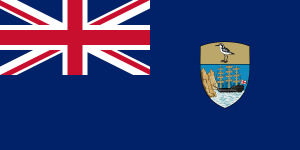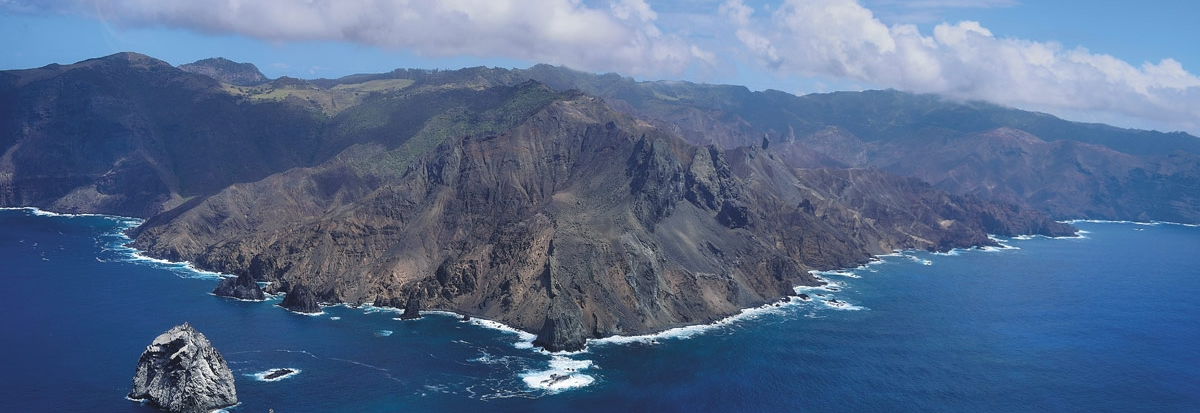Language/English/Culture/St-Helena-Timeline
St. Helena Timeline[edit | edit source]
Discovery of the volcano[edit | edit source]
The island was discovered by the Galician navigator João de Nova, who was in the service of Portugal, on May 21, 1502, the feast day of Saint Helena according to ancient and Orthodox usage, which earned it its name.
A few adventurers and slaves populate it. The sailboats, during their long crossings, stop there to renew their supply of fresh water and fresh food, which earned it the name of “Auberge de l'Océan”. In 1633, a Dutch fleet took possession of it on behalf of the Netherlands, which annexed it without occupying it. The British East India Company, which in the southern seas had no point of release for its ships, seized it in 1659 and fitted it out before ceding it to the Crown in 1834. Governors were then appointed. From 1815 to 1821, the island was loaned to the British Government as a place of exile for Napoleon.
Astronomical observations[edit | edit source]
Present on the island for two years, after which he published his Catalog of the Southern Sky, Edmund Halley also observed the transit of Mercury there in 1677; following his observation, he imagines a method to use the transits, essentially those of Venus, to determine the Earth-Sun distance. A British expedition observed from the island the transit of Venus of 1761 for this purpose.
Place of deportation[edit | edit source]
The island's isolation led the British to imprison some of their enemies' leaders there, the most famous of all being Napoleon Bonaparte.
Detention of Napoleon I[edit | edit source]
Following the Hundred Days, Napoleon I was exiled and deported by the British to Saint Helena where he arrived on October 14, 1815 aboard HMS Northumberland and landed there on October 16, 1815. The arrival of the emperor led to a increase in the island's population: nearly 1,500 English soldiers (in addition to the 800 soldiers of the East India Company) and 500 sailors from the war flotilla, as well as officials of the British government, accompanied by their families, without forget the small French colony that lived in the entourage of Napoleon I. In addition, the British, fearing a landing of French sailors to free the prisoner, claimed Ascension Island - until then uninhabited - and established a garrison there.
Napoleon died on May 5, 1821. The following day, the governor of the island, Sir Hudson Lowe, until then in perpetual conflict with his former prisoner, came in person to ascertain his death and declared to those around him: “Hey well, Gentlemen, that was England's greatest enemy and mine too; but I forgive him everything. At the death of such a great man, one can only experience deep pain and deep regret. "
In accordance with his last wishes in the event that his body should not be brought back to Europe, Napoleon I was buried on May 9 near a source, in the Geranium valley, since called “Tomb Valley”. On May 27, the entire French colony left the island. Nineteen years after the death of Napoleon, King Louis-Philippe was able to obtain from the United Kingdom the restitution of the ashes of the former emperor. The exhumation of Napoleon's body took place on October 15, 1840, then he was repatriated to France on the frigate La Belle Poule to Cherbourg, and buried at the Invalides in Paris.
In 1822, the Longwood house was ceded to a farmer who gave it back the use of the farm it had had before the arrival of Napoleon I, so that afterwards visitors found that the Emperor's house in detention housed "mill, silo, straw bales and even horses."
From 1854, Emperor Napoleon III negotiated with the British government the purchase of Longwood House and the Tomb Valley, which became French properties in 1858, under the name of "French domains of Saint Helena" and managed since by the Ministry of Foreign Affairs13. The Briars pavilion, the emperor's first home on the island, was added to the estate in 1959, when its last owner, the Australian writer Dame Mabel Brookes (1890-1975), Betsy Balcombe's great-niece, bought the Pavillon des Briars and the offer to France.
Dinizulu[edit | edit source]
Dinuzulu kaCetshwayo was imprisoned in Saint Helena] from 1890 to 1897.
Dinuzulu is sent to Saint Helena after being convicted of high treason and sedition for having led, at the age of 16, his Usuthu regiments and a small Boer commando of 300 men in victory against the forces of the chief Zibhebhu ka Maphitha and the British.
Zibhebhu was an important ally of the British in their divide-and-rule strategy as they pushed for the annexation of Zululand into 13 smaller territories, which would be ruled by complacent indunas. This decision would dismantle the power of the Zulu royal house.
Dinuzulu arrived on the island with an entourage of 20 people, including two of his wives; two uncles including Shingana; Harriette Colenso's sister, Frances; a doctor, a translator and advisers. They were prohibited from wearing their traditional Zulu dress and forced to adopt British linens and pants.
Dinuzulu adopted the structures imposed on him with all the enthusiasm he could muster and, facing them, quickly learned to write perfect handwriting in pen and ink, and to play and compose on the piano and to the organ.
He describes it in a letter: “I play the piano, the boat is standing; I play Mariner's Jog and Hornpipe, and I play Für Elise. I will play the organ at Saint-Jacques Cathedral when I am confirmed. Then I will only have one wife. Naturally the green hill is in Eshowe, which we miss a bit.
Any day he could be found, whip in hand, wandering the rocky outcrops of St. Helena in velvet slippers, silk ties, and top hats, sometimes leading his entourage of loyal servants.
He was also, it seems, a ladies' man. During the 10 years he was exiled to the island, he fathered seven children, including Maglan Noden, now 80, "Princess Dinuzulu," the one Zulu had read in Gray's articles and Du Plessis.
Sources[edit | edit source]
World Timelines[edit source]
Other Lessons[edit | edit source]
- British Indian Ocean Territory Timeline
- Bermuda Timeline
- Guernsey Timeline
- South Georgia South Sandwich Islands Timeline
- Cayman Islands Timeline
- Gibraltar Timeline
- History of Anguilla
- Australia Timeline
- What is America
- Canada Timeline


